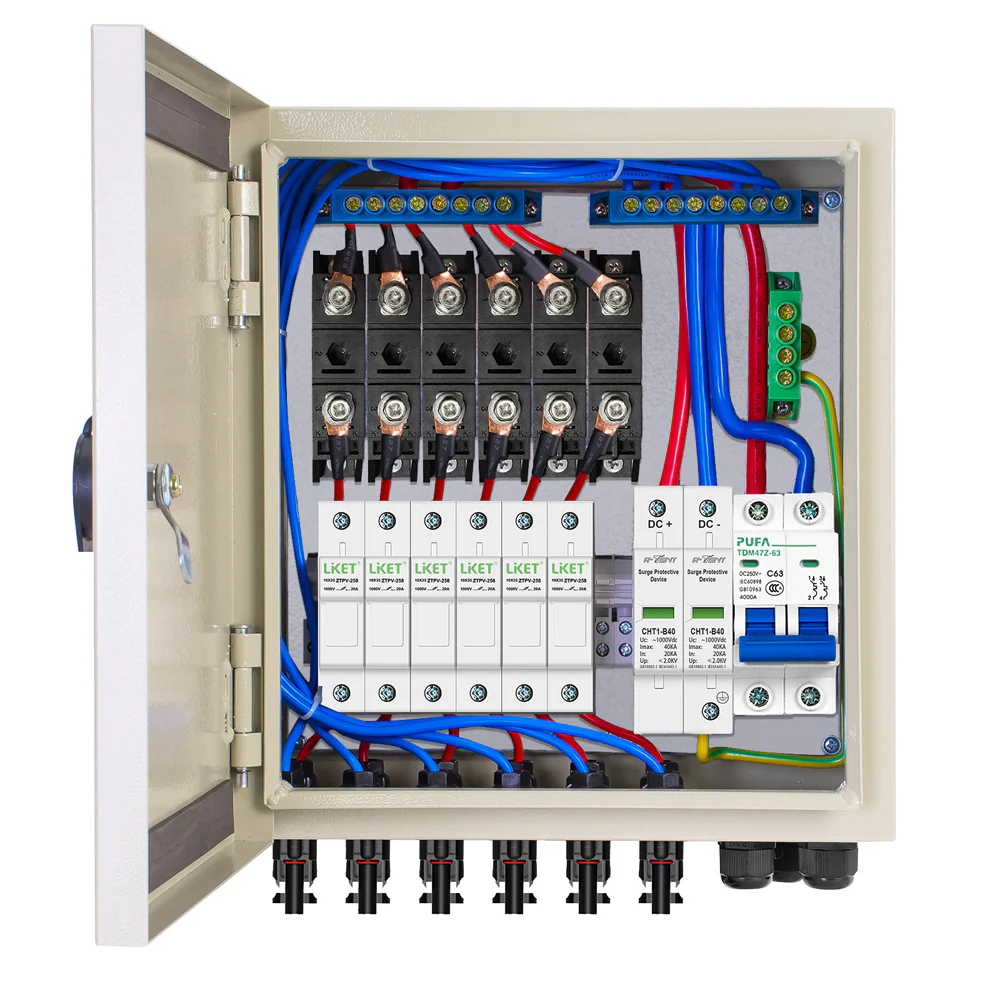Having solar arrays often means that they can be combined, but how does a solar combiner work?
A solar combiner box acts as a central hub for the DC (direct current) wiring in a solar panel system, particularly in larger installations. Here’s a breakdown of its key functions:
- Combining Outputs: As the name suggests, the combiner box combines the DC output from multiple strings of solar panels into a single output. Each string typically consists of several solar panels connected in series.
- Overcurrent Protection: It houses fuses or circuit breakers for each string. These fuses prevent damage caused by excessive current from a single string, protecting the inverter and other equipment.
- Safety Features: Some combiner boxes may include additional safety features like surge protectors to guard against voltage spikes caused by lightning strikes. They might also have grounding bars for proper earthing.
- Monitoring (Optional): Certain combiner boxes can integrate monitoring equipment to track the current and voltage of each string individually. This allows for identifying issues within a particular string if its performance deviates from the others.
Overall, a solar combiner box simplifies wiring, enhances safety, and can provide valuable monitoring capabilities in a solar power system.
Solar combiners, can often be used to add current, this is where the strings run in parallel.
For example a 360v 8 amp solar array can be combined with another. You could have 8 amp and 720 volts, or you could have 360v and 16 amps.
You can also mix the arrays where you could have 120v and 74v 8 amp arrays and combine this to make 194v and 8 amps. but you can also mix currents which is more typical use of a combiner.
Providing that you have similar voltage you can have 8 amp and 12 amp panels on the combiner;
for example two 120v arrays with 8 and 12 amps combined would be 120v and 20amps.
At RenewSolar we make a range of combiners and smart combiners. There is no limits to what we can and do make for clients, this could include smart switching combiners.
Smart Switching Solar Combiner.
This is the most popular type of set up for the combiner, typically this is used where there are more than one solar array and that the combined power is in excess of the inverters maximum inputs.
The target is to maximise the solar power and add the other array when the power from the main array is low. This in effect parallels the panels and does so automatically.
In summary the SSSC checks the power from the arrays and does the math for the output which goes to your inverter or charge controller when solar is low it switches on the other array to boost the current to the inverter, when the solar output is high, it turns off one of the arrays to lower the power to keep the system within safe margins.
Solar array monitor.
For some, the apps of any may not be available to give you accurate data from each of the solar arrays that you have, by using our Solar Arrays Monitor (SAM) you can see live data from what each of your arrays are doing at that time.
Some of the benefits is that you can tune your array, Spot problems and faults. this data can be put into home assistant or on a mini display. You can add more with a surface temperature sensor to keep an eye on the temperature of the array.
NOTE:
Combiner boxes can add current or voltage to the PV input of your inverter or charge controller. ENSURE That you do NOT exceed the manufacture limits – see sticker on the side of your device.

No responses yet